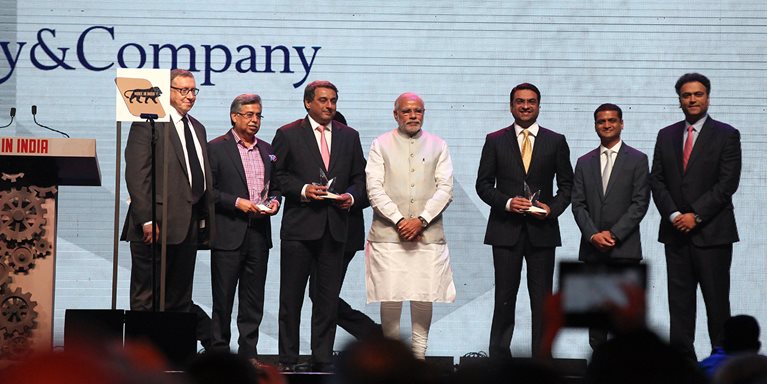Last month’s “Make in India” summit was noisy, colorful, and uniquely Indian. More than 10,000 Indian and international companies converged on Mumbai for a week of exhibitions, seminars, and panel discussions. The goal: to draw global attention to the potential of India’s manufacturing sector.
Prime Minister Narendra Modi has laid out a bold ambition to increase manufacturing’s contribution to India’s GDP from 14 percent to 25 percent by 2022—creating 100 million jobs in the process. Meeting this goal will require not only global investment in Indian manufacturing but also a commitment by Indian companies to increase the efficiency and sophistication of their operations.

Our involvement with “Make in India” started with conversations with India’s Ministry of Commerce and Industry. The ministry, desiring to recognize companies that were investing in high-quality manufacturing, had worked with editorial and business leaders at Time magazine to hatch a new set of awards for manufacturing excellence. So that the awards would be truly aspirational, they would be handed out at the summit by Prime Minister Modi. But how to screen the entries and develop a process for selecting winners? This is where McKinsey could help.
With less than 3 months to build the awards process from scratch, the McKinsey team based in our Gurgaon office had to hit the ground running. The team was led by Rajat Dhawan, a director and leader of our Operations Practice in Asia. A chemical engineer by training, Rajat has worked with automotive, steel, and other manufacturers in China, Germany, India, South Korea, the United Kingdom, and beyond. “From the start, we all wanted the awards to measure not just the profitability of an enterprise, but also their business practices and capability to transform the world around them,’’ Rajat says.
With this guiding principle in mind, the McKinsey team helped to define the award categories and eligibility criteria. Ashok Kumar, our senior expert, from the Asia Operations team, took the lead setting up a solid and transparent process. Ashok, formerly a commissioned officer in the Indian Air Force, knew he was running against the clock on this project. Time magazine, with our assistance, then invited nominations from a long list of companies that had recorded an economic profit over the past 5 years.
Simultaneously, we helped assemble a jury to pick the winners. Norman Pearlstine, executive vice president and chief content officer for Time Inc., was our jury chair. The jury membership consisted of John Rice, vice chairman of General Electric; N. R. Narayana Murthy, founder of Infosys; Chanda Kochhar, managing director and CEO of ICICI Bank; Carlos Ghosn, chairman and CEO of Renault-Nissan; Kevin Sneader, chairman, Asia, McKinsey & Company; and Rana Foroohar, assistant managing editor of Time.
As the closing date approached, applications poured in for the three main awards: Best in Class Manufacturing (ultimately won by Tata Steel), Manufacturing Innovator of the Year (won by Hero Motor), and Young Makers of the Year (won by Yogesh and Rajesh Agrawal of Ajanta Pharma.) The winners received their crystal trophies from the prime minister at a glittering event in Mumbai. There was no crystal trophy for the McKinsey team—just plenty of pride at having helped kick-start a movement to manufacture better and more efficiently in India.